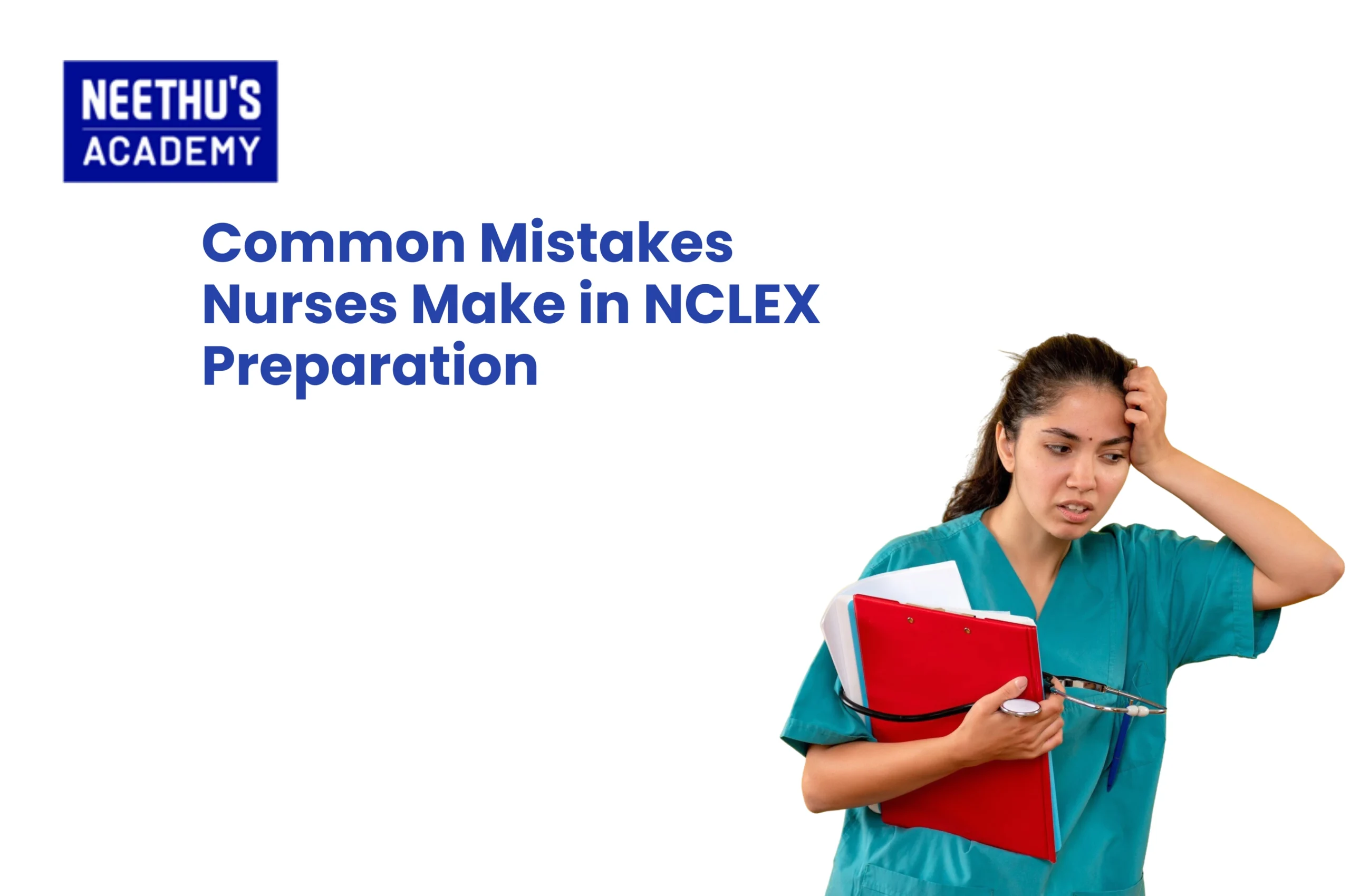On your way to becoming a successful nurse? Then, you might know the importance of having a good NCLEX score. NCLEX is…
NCLEX Question Types: Multiple-Choice, SATA, and Alternate Format Questions
If you’re preparing for the NCLEX-RN exam, you’ve probably come across NCLEX Select All That Apply questions, NCLEX Alternate Format Questions, or even Next Gen NCLEX question types. It can feel a little overwhelming but don’t worry—you’re not alone!
Most nursing graduates find it challenging to grasp the different NCLEX question types, but being aware of what’s out there can be the difference-maker in preparing yourself.
In this blog, we’ll discuss the various NCLEX question types such as Multiple-Choice, Select All That Apply (SATA), Alternate Format, and Next Generation NCLEX question types. We’ll also discuss the 4 levels of NCLEX questions.
Understanding NCLEX Question Types
The NCLEX (National Council Licensure Examination) was created to test a nurse’s capacity to apply what they know, make decisions, and prioritize care in practice. So the exam does not simply measure how much you know—it’s measuring how you use what you know.
There are various kinds of questions you’ll see, each created to evaluate different cognitive and decision-making skills. The main types of NCLEX questions are:
- Multiple-Choice Questions
- Select All That Apply (SATA) Questions
- Alternate Format Questions
- Next Gen NCLEX (NGN) Questions
Let’s look closer at each of them.
Multiple-Choice Questions
NCLEX Multiple Choice Questions are the most prevalent and sometimes the most familiar to students. These include a clinical scenario or problem (the “stem”) and four choices for an answer, where one and only one is correct.
Example:
A patient has chest pain. What should the nurse do first?
- Give prescribed morphine
- Call the healthcare provider
- Monitor vital signs
- Administer oxygen
Providing oxygen (D) is the correct initial action in this instance, according to airway and circulation priorities.
How to Approach Them:
- Read the question closely to pick out keywords such as “first,” “best,” or “first.”
- Eliminate clearly incorrect answers.
- Use tools such as Maslow’s Hierarchy, ABCs (Airway, Breathing, Circulation), and Safety/Precaution concepts.
Select All That Apply (SATA) Questions
NCLEX Select All That Apply questions are one of the most difficult question types. They are a type of Alternate Format Questions in which multiple answer choices can be correct. You have to analyze each choice separately and choose all that are correct.
Why They’re Difficult:
- There can be any number of correct answers ranging from one to all.
- There’s no partial credit—it’s all or nothing.
Strategy for Success:
- Treat each choice as a True or False statement.
- Don’t attempt to estimate how many are correct—concentrate on content.
- Practice regularly with SATA questions to develop confidence.
These questions demand deep understanding and frequently test higher-level critical thinking skills, so they fall under the application or analysis levels in the exam.
Alternate Format Questions
NCLEX Alternate Format Questions are not conventional question types that move beyond multiple-choice and SATA. They are used to simulate actual real-world clinical tasks and situations.
Typical Types Include:
- Fill-in-the-Blank (Calculation): Typically for dose or IV rate of flow questions.
- Hot Spot Questions: Pick places on images, i.e., where to administer an injection.
- Ordered Response: Put steps in order correctly (e.g., CPR or wound care).
- Audio Questions: Pick out abnormal heart or lung sounds.
- Drag and Drop: Prioritize tasks or interventions.
- Chart/Exhibit Questions: Use patient data or lab reports to answer.
These questions test your ability to interpret data, prioritize nursing actions, and apply procedures correctly. You’ll find them in increasing frequency with the newer test formats.
Four Levels of NCLEX Questions
To succeed, it’s important to understand the 4 levels of NCLEX questions, which reflect how deeply your knowledge is being assessed:
- Knowledge/Recall: Simple facts or definitions.
- Comprehension: Grasping and describing information.
- Application: Applying knowledge to clinical situations.
- Analysis: Analyzing data, setting priorities, and making decisions.
NCLEX tests primarily at the Application and Analysis levels. That’s why it is so important to practice beyond memorization and develop scenario-based thinking.
Next Generation NCLEX (NGN) Question Types
Developed to enhance clinical judgment testing, Next Gen NCLEX (NGN) question types were created from actual nursing cases and decision-making models.
What’s Different?
NGN questions are case study-based, meaning you’ll receive a patient scenario followed by multiple related questions. These might include:
- Extended Multiple Response: More than one correct answer.
- Drop-down Cloze: Choose the best term for blanks in a sentence.
- Matrix/Grid: Match symptoms with actions or diagnoses.
- Highlighting: Highlight critical parts of text related to the question.
- Bowtie Format: Select the condition, cause, and interventions based on a visual model.
NGN captures the richness of real nursing practice. It focuses on cue recognition, data analysis, response prioritizing, and outcome evaluation.
Best NCLEX Coaching Centres in Kerala
If you are going to appear for NCLEX and are not sure how to prepare on your own, joining a good NCLEX RN coaching center can work wonders. Neethu’s Academy is the best NCLEX Caoching center in Kerala, with its high-quality nursing education and experienced instructors. Whether you are a recent graduate or an experienced nurse, a structured coaching program can make you confident, fill gaps in your knowledge, and prepare you for the exam.
- Professional Counseling by trained faculty with experience in NCLEX
- Personalized Study Plans based on your strengths and weaknesses
- Practice Tests & Question Banks such as the new NGN formats
- Concept-Oriented Instruction for SATA and Alternate Format Questions
- Adaptive Online and Offline Batches
- Affordable and Accessible tutoring options
Conclusion
The NCLEX is not just a licensing exam—it’s your key to becoming a registered nurse. But passing it takes more than studying—it takes clever strategy and a strong grasp of NCLEX question formats.
Whether it’s Multiple-Choice Questions, SATA, Alternate Format Questions, or the new Next Gen NCLEX question types, there are quirks and challenges in each format. Understanding what to do and how to approach them can make a real difference in your chances of success.
Knowing the 4 levels of NCLEX questions makes you understand how your mind is being tested. And if you need structured guidance, join an NCLEX RN coaching center in Kerala such as Neethu’s Academy—where experienced faculty, live practice, and individualized guidance converge to make you successful.
Your NCLEX journey can be tough, but with proper preparation, it’s definitely possible.
Frequently Asked Questions
The NCLEX contains multiple-choice, Select All That Apply (SATA), fill-in-the-blank, ordered response, hot spot, audio, drag-and-drop, and Next Gen case-based questions.
Alternate item formats are atypical question types such as SATA, fill-in-the-blank, and hot spot questions beyond typical multiple-choice.
The number of SATA questions on NCLEX differs among test-takers, but on average, they range from 10 to 30.
NCLEX exam questions are mostly in scenario form and evaluate application and analysis in forms such as multiple-choice, alternate items, and NGN case studies.
Related Blogs
- All Posts
- NCLEX-RN
After graduation, the first step towards becoming a licensed Practical/ Vocational Nurse (LPN/LVN) or Registered Nurse (RN) is passing the NCLEX Exam.…
The NCLEX-RN exam is one step in a nurse's career that holds a great stake and, at times, not very easy outcomes.…
Course Enquiry
Latest Posts
- All Posts
- canada
- CBT
- DHA
- French
- GENERAL
- German
- IELTS
- IQN NEW ZEALAND
- MOH
- NCLEX-RN
- NHRA
- OET
- OSCE
- PROMETRIC
- PTE
- TOEFL
- Back
- NCLEX - NGN
- Back
- OET FOR PHYSIOTHERAPIST
- OET FOR PHARMACIST
- OET FOR DOCTORS



